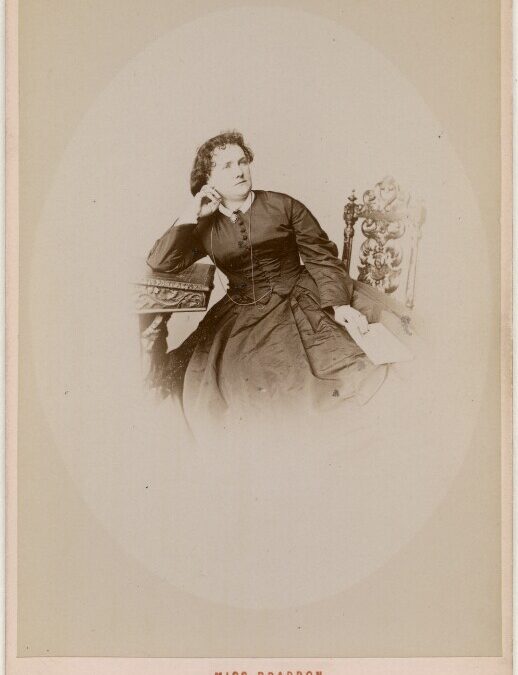The Doctor’s Wife is Braddon’s free adaptation of Flaubert’s Madame Bovary. Like Emma Bovary, Isabel Gilbert, the doctor’s unhappy wife, looks for romance. Unlike Emma, Isabel is never sexually seduced. She’s sullied but never ruined.
There are two picnics. At first, George Gilbert, the doctor, is excited because he expects to court Isabel Sleaford there. “A picnic! a picnic.” he thinks, “in Hurstonleigh grounds, with Isabel Sleaford!”
George doesn’t care about food, but the host of the picnic, Roland Lansdell, does. His provisions are impressive: a tongue, then a pair of fowls, a packet of anchovy sandwiches, a great poundcake (at the sight of which the eyes of the orphans glittered), delicate caprices in the way of pastry, semi-transparent biscuits, and little le block of stilton cheese, to say nothing of sundry bottles of Madeira and sparkling Burgundy.
A marriage is arranged, and Isabel marries George, though she’s aware of her lack of passion for him. George never notices. But Roland Lansdale does. An experienced Casanova, Roland is impressed with Isabel’s beauty plans to conduct a “dishonorable and sentimental flirtation” with her at a picnic among the romantic ruins of Waverley Castle’s ruins,*
The second picnic is Lonsdale’s preposterous attempt to seduce Isabel. Thinking an ostentatious picnic will make Isabel amorous, Lansdale sets the table with a magnificent game pie, which was made for the occasion, the crust of which was as his way to Isabel’s heart is impress her with an ostentatious display of food, highly glazed as a piece of modern Wedgewood. He did not concern himself about the tend young fowls, nestling in groves of parsley; nor the tongue, floridly decorated with vegetable productions chiseled into the shapes of impossible flowers; nor the York ham, also in a high state of polish, like Spanish mahogany, an encircled about the knuckle by pure white fringes of cut paper.” There are also hothouse grapes, peaches, pineapples, and pears.
He needn’t have bothered. Isabel is so needy she’s ready for any adventure. (He might as well have served franks and beans.)
Fortunately for Braddon’s eager readers, George Gilbert dies of typhoid fever. Lansdale renews his courtship but is unhappy. “I—I, who have lived my life out, as I thought, wherever life is most worth living,” he says, I suffer like this at last for the sake of a village surgeon’s half-educated wife? I—who have given myself the airs of a Lauzun or a [Beau]Brummel—am perishing for the love of a woman who doesn’t even know how to put on her gloves!” Though Isabel is willing, before she can deal with Lansdale, he is thrown from his horse. On his death bed, he says, “Oh, dear Mrs. Gilbert, you must try and forget what I have been, or you will never be able to understand what I am. And I was so tired of life, and thought I had so little interest in the universe; yet I feel so utterly changed a creature now that all earthly hope has really slipped away from me. I sent for you, Isabel, because in this last interview I want to acknowledge all the wrong I have done you; I want to ask your forgiveness for that wrong.”
*Antonin-Nompar de Caumont, Count and Duke de Lauzun, (d.1723) suffered for unrequited love. Beau Brummel (d. 1840), a dandy and notable wit who died insolvent and insane.
See Mary Elizabeth Braddon. The Doctor’s Wife. London: J. Maxwell and Co., 1864; http://www.gutenberg.org/files/35485/35485-h/35485-h.htm; The Doctor’s Wife (1864). New York: Oxford University Press, 2008; Joyce E.Kelley. “Beating them to the Punch: satirizing sensation from the 1860s comic journal to Braddon’s The Doctor’s Wife.” Victorians: A Journal of Culture and Literature, vol. 119, spring 2011
* Braddon’s narrative is set in 1852, the same year as the publication of Madame Bovary. Waverley Castle is an allusion to Walter Scott’s historical romance Waverley.

